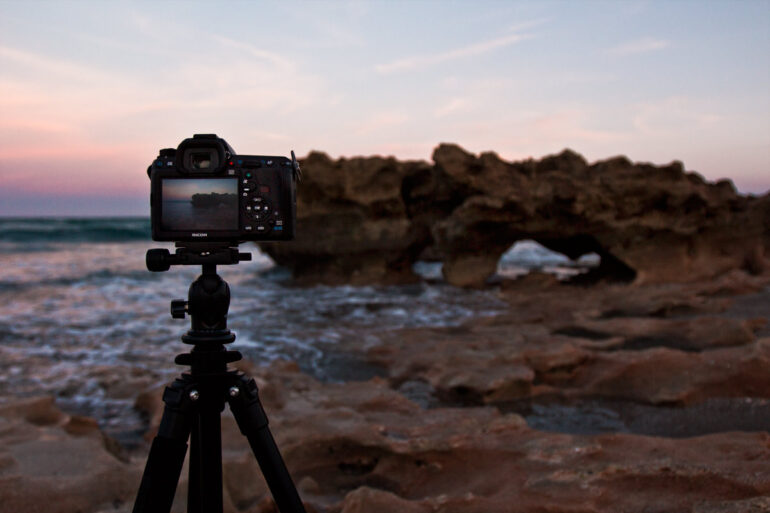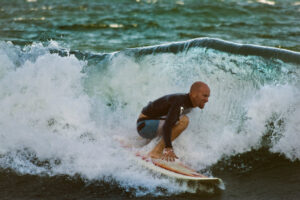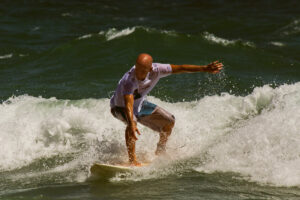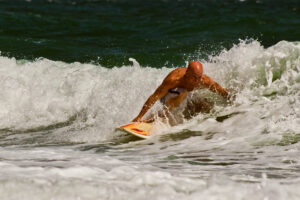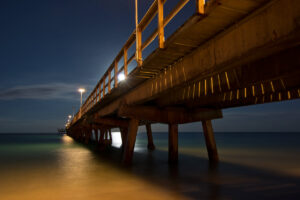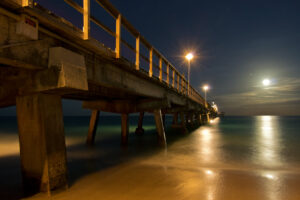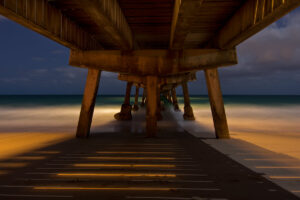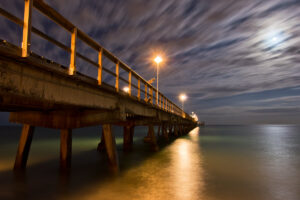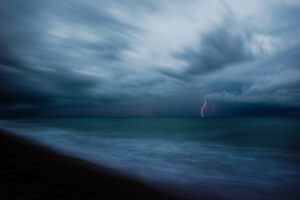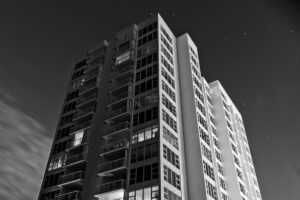We may earn a commission when you purchase through affiliate links. Learn more.
For people like myself who tend to root for the underdog, Pentax has always been an easy brand to love. When Pentax was purchased by Ricoh in 2011, a lot of loyal Pentax shooters held their breath, fearing that the merger might kill off the brand. In 2014, it seems that everyone can breathe again — Pentax and Ricoh have released several excellent cameras since the merger, and I was pretty excited to check out their latest flagship DSLR to hit the market, the Pentax K3.
A 24 megapixel DSLR with an APS-C sized sensor, the Pentax K3 has the highest resolution of any Pentax APS-C DSLR to date; for more resolution in a Pentax, you’ll have to turn to their medium format Pentax 645D with 40 megapixels or the new Pentax 645Z with 51.4mp. With an impressive list of professional features, often found only on high end full-frame cameras, the Pentax K3 is moderately priced at only around $1300 for the body and $1650 including the 18-135 kit lens. In fact, the Pentax K3 boasts so many features that I think it’s pretty safe to call it the most full-featured and impressive APS-C DSLR camera available on the market. Like Pentax’s previous DSLR cameras, the K3 is a rugged photo taking machine, capable of surviving in some pretty nasty weather.
Pentax K3 Features and Specifications
With a 24 megapixel APS-C size sensor, the Pentax K3 is an advanced DSLR with a weather resistant magnesium alloy and stainless steel body. With 92 independent seals, the Pentax K3 is weather, cold, and dust resistant to ensure continuous operation in a diverse array of environments.
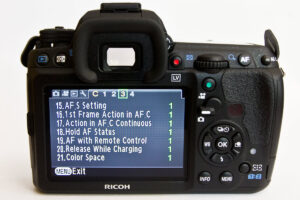 Low light, high ISO shooting is possible with good results, with a maximum ISO of 51200. Continuous shooting can be done at up to 8.3 frames per second for 22 consecutive RAW photos or 60 JPEGs — certainly fast enough for capturing sports and wildlife action when combined with the fast maximum shutter speed of 1/8000. The Pentax K3 uses a SAFOX11 autofocus system with 27 focus points, of which 25 are cross type points and autofocusing is quick and accurate.
Low light, high ISO shooting is possible with good results, with a maximum ISO of 51200. Continuous shooting can be done at up to 8.3 frames per second for 22 consecutive RAW photos or 60 JPEGs — certainly fast enough for capturing sports and wildlife action when combined with the fast maximum shutter speed of 1/8000. The Pentax K3 uses a SAFOX11 autofocus system with 27 focus points, of which 25 are cross type points and autofocusing is quick and accurate.
The Pentax K3‘s sensor does not have an optical low-pass filter (aka. anti-aliasing filter), enabling very sharp photos to be captured. An optical low pass filter is used to minimize moire, which is a strange looking wavy, rainbow colored pattern that can appear when photographing a scene with repetitive details like you might find on fabric or a feather which exceed the sensor’s resolution. Omitting this anti-aliasing filter enables sharper images at the risk of moire in certain situations. To get the best of both worlds though, the Pentax K3 features a unique system that allows the camera to simulate the effects of an anti-aliasing filter. This option can be turned on or off, depending upon the scene — for maximum image sharpness, it can be left off. For situations where moire may be an issue, it can be turned on…and the results are quite good, perhaps even as good if not better than many of the cameras which actually do have an anti-aliasing filter.
In-camera shake reduction can compensate for around 3.5 stops, allowing sharp images to be captured in much lower light at slower shutter speeds, or when using long lenses. The beauty of the in-camera shake reduction is that more expensive lenses with stabilization systems don’t need to be purchased to get the same benefit — even older manual focus lenses will work with Pentax’s shake reduction system.
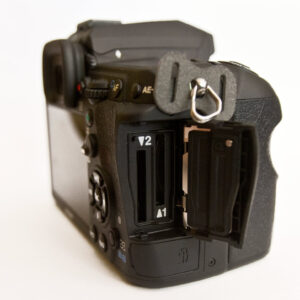 2 SD memory card slots is a great pro-level feature that allows you to record the same image to both cards for added peace of mind (wedding photographers will enjoy this feature), or one card can record RAW while the other records JPEG, or — you can simply double the amount of available memory that you have, recording images and video to the second card when the first one is full.
2 SD memory card slots is a great pro-level feature that allows you to record the same image to both cards for added peace of mind (wedding photographers will enjoy this feature), or one card can record RAW while the other records JPEG, or — you can simply double the amount of available memory that you have, recording images and video to the second card when the first one is full.
A glass pentaprism viewfinder provides 100% frame coverage and 0.95x magnification. The big 3.2 inch 1037 dot LCD screen features an anti-reflective coating, making live-view monitoring in the sunlight easier. An electronic dual axis level makes getting horizons perfectly straight an easy task; especially useful to landscape photographers who lose valuable resolution when crooked horizons are straightened in post-processing. With the K3 mounted on a tripod, photographers will never again have a good excuse for the ocean sliding down a 5 degree slope.
The Pentax K3‘s shutter is rated for 200,000 cycles, an impressive amount that for most users will mean the camera will become technologically long in the tooth and be replaced long before the shutter gives out. A feature I particularly like is the Pentax K3’s mode dial which has a handy locking mechanism that can be easily engaged to prevent the dial from spinning, preventing clumsy photographers like me from accidentally changing the shooting mode. For the photographers who do like to have a free spinning dial, keeping the lock disengaged will keep them happy as well.
While Pentax has trailed behind its competitors in the video capture arena in the past, the Pentax K3 makes use of H.264 video compression and enables manual, program, and priority exposure control during movie recording. Full HD 1920×1080 recording is available using several frame rates including 60i, 50i, 30p, 25p, and 24p. For 1280 x 720 video recording, 60p, 50p, 30p, 25p, and 24p frame rates can be used. Audio recording can be done with the built in stereo microphone; for use of an external microphone a 3.5mm mic terminal is available. For audio monitoring, a headphone jack is included and stereo levels can also be displayed on-screen during video capture.
Who is the Pentax K3 for?
While the Pentax K3 is often referred to as a “prosumer” or “semi-pro” camera (that DSLR market segment that resides somewhere in limbo between professional grade and consumer grade), I’d like to challenge this notion. While the price tag may be consumer grade, the Pentax K3 is every inch the professional DSLR camera.
For the past decade, online photography forums have been filled with people insisting that a full-frame sensor is a necessity for professional photography. As such, the (online) world of photography has legions of people pining after the almost mystical benefits they think full-frame sensors will bring to their photography, although most can’t really articulate why they need a full frame camera. While admittedly, Pentax probably should have gotten into the full frame game from the beginning, Pentaxians of course know that you don’t need a full-frame camera to take a great photo that can stand up to even the peepiest of the pixel-peepers and indeed, I think that we’ve reached a point in our technological progress that having a full-frame sensor is perhaps no longer the defining characteristic of what makes a professional DSLR camera.
High ISO noise performance in the Pentax K3 is outstanding and for those who don’t realistically need the wider angle of view that full-frame cameras can offer, the Pentax K3 is a very solid performer, regardless of what kind of work you shoot. For those who shoot with Pentax DSLR cameras already and have a collection of Pentax lenses, the Pentax K3 represents a good buy, especially if you’ve been longing for more resolution and any of the numerous features that the K3 brings to the table.

For those who are new to Pentax, buying into any brand always requires some careful thought and consideration. While you may find some who complain about gaps in Pentax’s lens lineup, most photographers will find what they’re looking for in Pentax’s 40 compatible lenses which span the range from ultra-wide angle to super-telephoto. The ability to use older manual focus Pentax K mount lenses adds even more optical options, many of which can be picked up incredibly cheaply. Above all, the Pentax K3 is the camera to buy if you need a DSLR that can brave whatever elements mother nature throws at you.
The Pentax K3 is one solid, well built piece of gear and unlike other DSLR camera manufacturers who put their image stabilization in the lenses, the K3 features in-camera stabilization, meaning that even if you use those older Pentax manual focus lenses, you’ll still get this benefit. If you’re in search of a camera to take casual photos of your family and maybe bring on the occasional vacation, the Pentax K3 will certainly get the job done, but you’d probably be better off going with something lighter and simpler — this may be more camera than you really need. If you’re a professional or serious amateur though who heavily uses and maybe even occasionally abuses your gear with outdoor adventures and travel, the Pentax K3 is the camera built just for you.
Pentax K3 Appearance and Feel
When you pick up a Pentax K3, the first thing you notice is that it’s a bit heavier than it looks — 1.76 pounds with the battery in it, and no lens mounted. The camera looks and feels as if its ready for anything… and it is, with a steel chassis and magnesium alloy cover, plus 92 seals to keep out the weather. All in all, the Pentax K3 is a good looking camera with a grip that’s comfortable to hold. While DSLR cameras seem to be getting smaller and smaller, for a guy like me who doesn’t have infant-sized hands, it’s nice to have use a DSLR that my hand can actually grip and not hold like a teacup. There are a lot of buttons on the Pentax K3, but for the most part their placement makes sense.
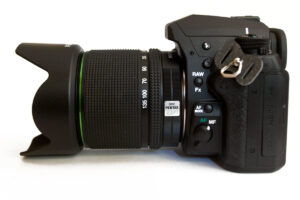 On the front side of the camera is a RAW/FX button which allows you to quickly set the image quality to whatever RAW format you’ve designated in the menu; this feature comes in handy if you’re shooting JPEG images but suddenly want to switch to RAW capture without having to scroll through the menu.
On the front side of the camera is a RAW/FX button which allows you to quickly set the image quality to whatever RAW format you’ve designated in the menu; this feature comes in handy if you’re shooting JPEG images but suddenly want to switch to RAW capture without having to scroll through the menu.
Right below this button, you’ll find an AF mode button for quick selection of the autofocus mode, and beneath this button is a switch for toggling between autofocus and manual focus. As someone who frequently uses manual focus, this switch is in a good spot and is easy to reach. Just above this set of buttons is one that deploys the pop-up flash, which rises higher than many I’ve seen, useful for using the flash along with longer lenses and for minimizing red eye.
On the rear of the camera to the right of the viewfinder you’ll find the LV button with its red dot, which is used to turn on Live View. Right beside this button is the aperture dial, flanked by an AF button that can be used to autofocus the camera without having to press the shutter. To lock the exposure, you’ll find the AE-L button to the right of the AF button. Once pressed, Exposure Lock will lock the auto-exposure settings so that the following photos have the same exposure and white balance settings, a feature that’s particularly useful when shooting panoramas to ensure that all of the photos will have the same exposure.
Above the LCD display to the left of the camera you’ll find the play and delete buttons; the delete button also functions as the metering mode button.
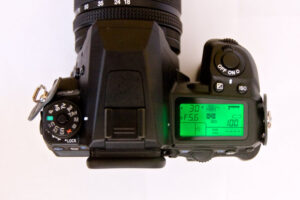 To the right of the LCD you’ll find a green button — when in Manual mode, pressing this button sets the metered exposure automatically; this can be especially handy if you’re shooting long exposures in the evening and suddenly see a bird flying towards you. Resetting all of the exposure variables manually can take quite a while, so this button makes it an instant thing…pretty handy! Below the green button, you’ll find the toggle for switching between video recording and still shooting. The rest of the buttons are fairly self explanatory and are easy to figure out, even without consulting the included manual.
To the right of the LCD you’ll find a green button — when in Manual mode, pressing this button sets the metered exposure automatically; this can be especially handy if you’re shooting long exposures in the evening and suddenly see a bird flying towards you. Resetting all of the exposure variables manually can take quite a while, so this button makes it an instant thing…pretty handy! Below the green button, you’ll find the toggle for switching between video recording and still shooting. The rest of the buttons are fairly self explanatory and are easy to figure out, even without consulting the included manual.
A monochrome secondary LCD display on the top of the camera shows all the usual exposure information, along with the metering mode and autofocus points you’ve selected. It also displays which of the dual SD card slots you’re using and which file types are being recorded to each. If you’re shooting at night, a green backlight can be turned on.
Pentax K3 Performance
Shooting with the Pentax K3 is a very enjoyable experience. Images are essentially noise free from ISO 100-800 and ISO 3200 and 6400 are still very usable. Above ISO 6400, noise becomes more obvious, but with some post-processing, even images shot at ISO 51200 are often suitable for small prints. JPEG files shot with the Pentax K3 look good, but with a serious camera like this that packs so many professional features in, you’re passing up a great opportunity to shoot RAW. When it comes to RAW, photographers are given two choices: Pentax’s PEF format and Adobe’s DNG format. DNG is a widely used format and you’ll find this file type to be the most compatible when it comes to viewing and processing images. Unlike many entry level DSLR cameras which can only handle shooting a few RAW files before the buffer fills and burst shooting grinds to a halt, with a fast SD card the Pentax K3 can keep shooting in RAW for up to 22 files before the buffer slows things down.
While the Pentax K5 II and Pentax K5 IIs both can shoot at 7 frames per second, the Pentax K3 gets a burst of speed over its predecessors and brings the rate up to 8.3 frames per second. While there are of course cameras like the Canon 1DX and Nikon D4s which have faster burst rates, the Pentax K3 is impressive and fairly quiet as well. For those of us who aren’t shooting professional sports or hummingbirds darting from flower to flower, the Pentax K3 also offers two slower continuous shooting rates; 3 fps or 4.5 fps. At 3 frames per second, 200 JPEG images or 52 RAW files can be captured before the buffer fills. At the slightly faster 4.5 fps setting, the buffer fills after about 100 JPEGs or 32 RAW files. The camera’s autofocus system is quick and accurate, even when using subject tracking.
Battery life with the Pentax K3 is reduced from the K5 II, but I found it to be pretty good. Without any flash use, the camera should have no trouble lasting for more than 600-700 shots. I was able to shoot about 300 long exposures with heavy live view usage at both sunrise and sunset before the battery was exhausted — long exposure photography tends to really eat up battery life. A note about long exposure photography with the Pentax K3; during the daytime, the viewfinder seems to suffer from a very obvious light leak. This is a pretty common occurrence even with professional DSLR cameras and the remedy is very simple: just cover the viewfinder. (A piece of black gaffer’s tape works perfectly.)

While I don’t often meet too many kit lenses that I love, I was impressed by the Pentax DA 18-135mm F/3.5-5.6 lens that the Pentax K3 optionally ships with. While f/3.5 is not the fastest, I found the lens to be exceptionally sharp. Used wide open, the bokeh is surprisingly nice as well. I also enjoyed using the K3 with the Pentax HD DA 55-300mm f/4-5.8 lens, which priced at around $450 is a real bargain. Most lenses with such a wide focal length range tend to be iffy when it comes to sharpness, but even at 300mm I was impressed.
When it comes to video, the Pentax K3 can hold its own when it comes to quality, although you won’t be able to continuously autofocus on a subject during a recording. Since this camera is marketed to serious photographers and DSLR videographers though, this market segment is more likely to pull focus manually, so I don’t see this to be the huge shortcoming that some others apparently do. Focus peaking, a handy feature that highlights the in-focus areas of the scene on the LCD display makes pulling focus manually easy.
Conclusions
The Pentax K3 is easily the current top APS-C DSLR camera with a huge set of features, many of them innovative and unique to Pentax. While this may not be the ideal camera for the casual snapshot photographer, for those who demand a lot from a DSLR, the Pentax K3 is tough to beat. With 24 megapixel resolution and outstanding low light performance, the K3 is enough camera to last even the most gear-hungry photographer for a long time.
Like most of Pentax’s cameras, the K3 is a DSLR that seems to actually give photographers the features they would want in a camera, not just the features that a marketing executive thought sounded the most high-tech. For serious photographers who shoot in heat, cold, mud, rain, snow, and whatever else the sky and earth can throw at you, the K3 is certainly at the top of its class and at the price it’s a great buy.

